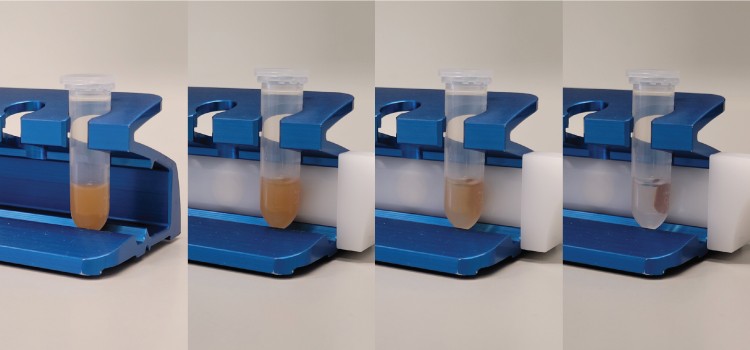
New method for localising modifications in mRNA
The genetic information of an organism is stored in the form of DNA (deoxyribonucleic acid) in every cell. In order to produce proteins with this blueprint, the DNA is first transcribed into mRNA (messenger ribonucleic acid). As in DNA, this consists of four basic building blocks. These basic building blocks can be chemically modified naturally at certain positions and thus influence cell development and cell metabolism. For example, such modifications change the stability of RNA and control the specialisation of cells for certain tasks, or the quantity of proteins produced, or the growth of tumours. A team led by biochemist Prof. Andrea Rentmeister from the University of Münster and bioinformatician Prof. Christoph Dieterich from Heidelberg University Hospital has now presented a new method in the journal "Nature Communications" for comprehensively detecting and, at the same time, precisely localising these modifications in mRNA.
In contrast to mutations, the modifications do not change the genes themselves. "However, if modifications are incorrectly incorporated into the basic building blocks of the mRNA, this can have dramatic consequences for the cell," says lead author Nadine Kück, a doctoral student in Andrea Rentmeister's research group. "It is therefore important to understand what effects the individual modifications have. We need to know exactly where the modifications are located on a gene, how frequently they occur there, and how healthy and diseased cells differ in this respect. Perhaps one day it will be possible to treat diseases caused by faulty modifications."
The most important type of modification is the labelling of molecules in the genetic material by means of so-called methyl groups. This methylation can occur in all the basic building blocks of DNA and mRNA, as well as in different positions in these basic building blocks. In the mRNA of animals, plants and fungi – so-called eukaryotes – the N6-methyladenosine and the 5-methylcytosine are particularly important within the methylations. With the new method now being presented, these locations can be determined in a single experiment for all mRNA molecules produced in the cell and pinpointed precisely on the respective gene. The trick is that, instead of the antibodies that are usually employed, the researchers use metabolic labelling, in which a molecular identifying mark is incorporated into the mRNA – in this case propargyl groups instead of methyl groups.
The advantage, say the researchers, is that the propargyl groups are accessible via click chemistry. "This means that they are starting points for fast, precise reactions,” says Nadine Kück. “However, as the required reaction partners are not present in the cell, they do not react within the cell, which is why they are biocompatible for the cell.This allows us to label them in such a way that we can easily separate the mRNA with the propargyl groups from the other cell components and ultimately identify the exact locations with the modifications on the genes."
Antibodies are often used in other studies to label modified areas of RNA. However, researchers are trying to find alternatives, as labelling with antibodies does not always work very accurately and can lead to falsely positive and falsely negative results.
The work was funded by riority Programme SPP1784 (RE 2796/3-2, DI 1501/11-1) of the German Research Foundation (DFG) and by a grant from the CiM-IMPRS Graduate Programme.
Original publication
Hartstock, K., Kueck, N.A., Spacek, P. et al. (2023): MePMe-seq: antibody-free simultaneous m6A and m5C mapping in mRNA by metabolic propargyl labeling and sequencing. Nat Commun 14, 7154. DOI:10.1038/s41467-023-42832-z
